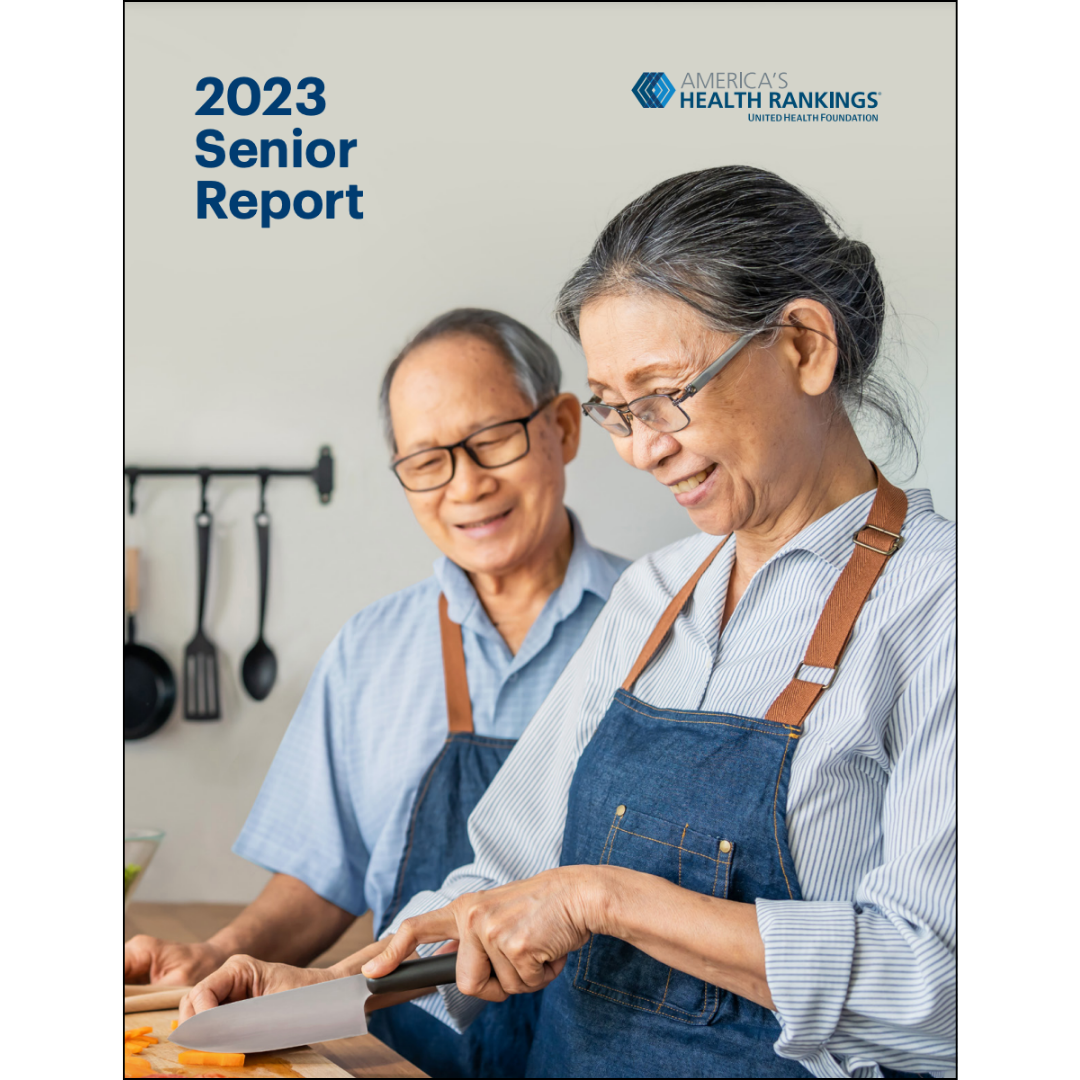What the 2023 America’s Health Rankings Reveal About Senior Health
The United Health Foundation has released its 2023 Senior Report, which provides an in-depth look at the health of older adults. This is the eleventh Senior Report released, creating a rich data history that allows for the review of older adult health progresses and setbacks.
The 2023 report examines key measures that impact Americans as they age, including the availability of communal support, access to health care resources, and specific health issues like cognitive impairment. Individual state summaries are also available, providing a benchmark that organizations can use when setting goals. The report also includes valuable information for senior care communities.
The report utilizes data from multiple sources, including the Centers for Disease Control and Prevention’s Behavioral Risk Factor Surveillance System and the Centers for Medicare & Medicaid Services’ Mapping Medicare Disparities Tool. Many of the measures include data from 2021, so the report reflects some of the effects of the COVID-19 pandemic.
Early Death
 One of the key factors that the report examines is early death. The report found that the early death rate increased for the second year in a row. The early death rate increased 4% from 2020 to 2021, and it’s increased by 22% since 2019.
One of the key factors that the report examines is early death. The report found that the early death rate increased for the second year in a row. The early death rate increased 4% from 2020 to 2021, and it’s increased by 22% since 2019.
The report also revealed that drug deaths in older adults have increased over the past two decades. Drug deaths are mostly due to opioids, and because older adults are often prescribed opioids for chronic pain or surgical recovery, this demographic is among the most impacted by the opioid crisis. The drug death rate in older adults increased from 6.9 to 9.9 between 2016 and 2018 and 2019 to 2021. Opioid deaths from synthetic opioids like fentanyl increased by 175% in older adults between 2016 to 2018 and 2019 to 2021.
Health Conditions
Of particular value to the senior care industry, the report examines health conditions in great detail. It reveals that cognitive impairment in those aged 65 and older decreased slightly from 2019 to 2021. As of 2021, nearly 4.3 million older adults reported cognitive difficulty, including difficulty remembering, concentrating, or making decisions.
The occurrence of chronic conditions in older adults has increased, however. The percentage of Medicare beneficiaries age 65 to 74 who have three or more chronic conditions increased from 46% to 52% from 2020 to 2021. These increases were experienced by all racial, ethnic, and gender groups.
Physical inactivity, which can increase the risk of health issues, increased in adults age 65 and up. Between 2018 and 2021, inactivity increased by 6%. Alabama, Maine, and West Virginia saw the most significant increases in inactivity.
Social Changes
The report also examines changes in social isolation risk factors. Risk factors significantly improved between 2011 to 2015 and 2017 to 2021, with factors like independent living difficulty, disability, being divorced, separated, or widowed; and living alone decreasing. However, during the same period, having never been married, another risk factor, increased by 22%.
Notably, the report identifies that the percentage of households with adults age 65 and older that had broadband internet increased by 7% from 2018 to 2021. By 2021, the 83.1% of households with broadband equaled nearly 45.3 million households. This increase in high-speed internet access is particularly valuable as it’s essential for telehealth appointments and it can facilitate communication with friends and family.
Takeaways for Senior Care Communities
The 2023 Senior Report provides a valuable look at not only senior health, but also its progression to this point. The insights about factors like multiple health challenges and early deaths offer important information for the senior care industry. Data on trends such as the increase of inactivity and social isolation risk factors helps to identify some of the challenges older adults face, and senior care organizations can take steps to address and provide support for these challenges.
While the report identifies increases in issues like early death and drug-related deaths, there are also high points. With factors for social isolation decreasing and high-speed internet access increasing, recovery from the pandemic continues.

Paige Cerulli is a contributing writer to i Advance Senior Care.
Related Articles
Topics: Featured Articles , Risk Management











